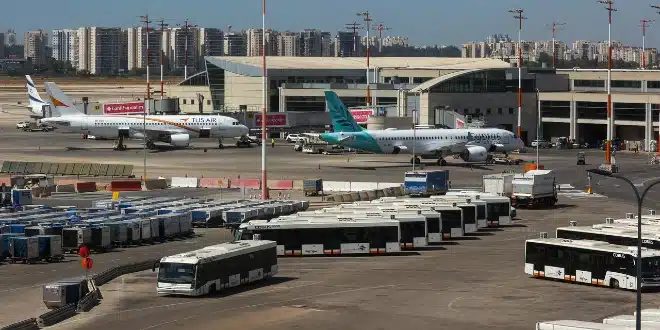On May 6, 2025, the Israeli military conducted a series of airstrikes targeting Houthi-controlled sites in Yemen, including Sanaa International Airport and key infrastructure facilities. These operations were launched in direct response to a ballistic missile attack by the Iran-backed Houthi rebels that struck near Israel’s Ben Gurion Airport two days prior, injuring several individuals and causing temporary disruptions to air travel.
Israeli Airstrikes Disable Sanaa Airport and Target Infrastructure
The Israeli Defense Forces (IDF) reported that the airstrikes effectively disabled Sanaa International Airport, impacting the runway, terminal buildings, and adjacent military installations under Houthi control. Prior to the strikes, Israeli authorities issued warnings advising civilians to evacuate the vicinity of the airport to minimize potential casualties. In addition to the airport, the IDF targeted several power plants and a cement factory in the Bajil district, approximately 55 kilometers northeast of Hodeida, which were alleged to be utilized by the Houthis for military purposes.
The Houthi-run health ministry reported that the airstrikes on Hodeida resulted in at least four fatalities and 39 injuries. The strikes on the cement factory were particularly significant, as the facility was purportedly used for manufacturing weapons. The Israeli military emphasized that these operations aimed to degrade the Houthis’ military capabilities and prevent further attacks on Israeli territory.
Escalation Following Houthi Missile Strike on Ben Gurion Airport
The Israeli airstrikes were prompted by a Houthi missile attack on May 4, 2025, which marked the first time a missile had landed within the perimeter of Ben Gurion Airport since the onset of the Gaza conflict in October 2023. The missile struck an access road near the airport’s main terminal, injuring eight people and causing significant disruptions to air travel. Several international airlines, including British Airways, Lufthansa, and Air Europa, suspended flights to and from Tel Aviv in the aftermath of the attack.
The Houthis claimed responsibility for the missile launch, stating it was in retaliation for Israel’s military actions in Gaza and asserting that Israeli airports were no longer safe for travel. The missile attack underscored the Houthis’ capability to strike targets at considerable distances and highlighted the challenges faced by Israel’s missile defense systems in intercepting such threats.
Broader Regional Implications and Ongoing Conflict
The recent exchange of hostilities between Israel and the Houthi rebels reflects a broader pattern of escalating tensions in the Middle East. Since the resumption of the Gaza conflict in March 2025, the Houthis have intensified their attacks on Israeli targets, positioning themselves as a key component of Iran’s “Axis of Resistance.” In response, Israel has conducted multiple airstrikes on Houthi positions in Yemen, aiming to deter further aggression and disrupt the group’s military infrastructure.
The United States has also been actively involved in countering Houthi threats, launching a series of airstrikes targeting the group’s positions in Yemen since mid-March 2025. These coordinated efforts underscore the international dimension of the conflict and the complexities involved in addressing the multifaceted security challenges posed by the Houthis and their regional allies.
As the situation continues to evolve, the potential for further escalation remains high, with both sides demonstrating a willingness to engage in sustained military operations. The recent developments highlight the fragile nature of regional stability and the ongoing risks associated with the protracted conflicts involving state and non-state actors in the Middle East.


